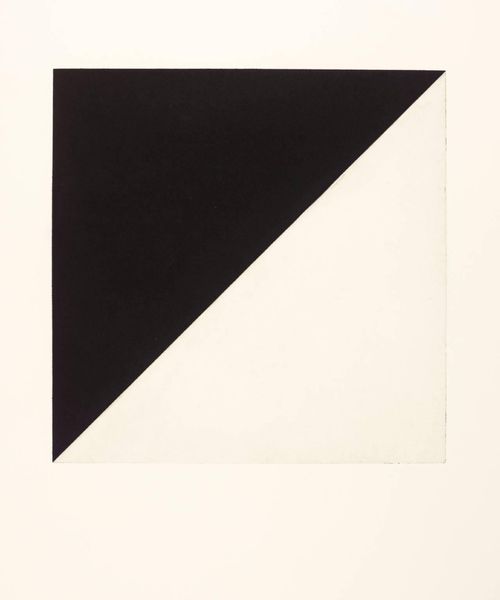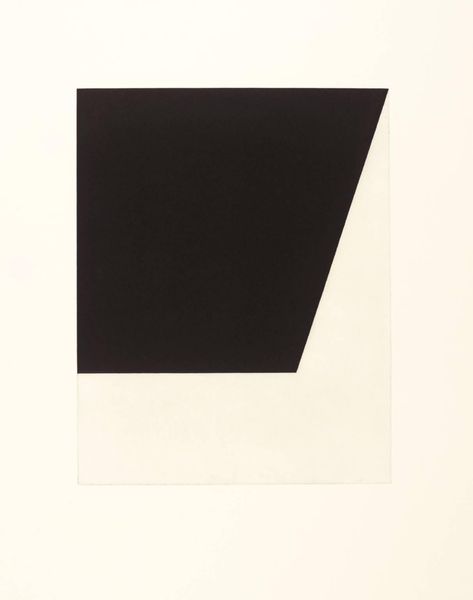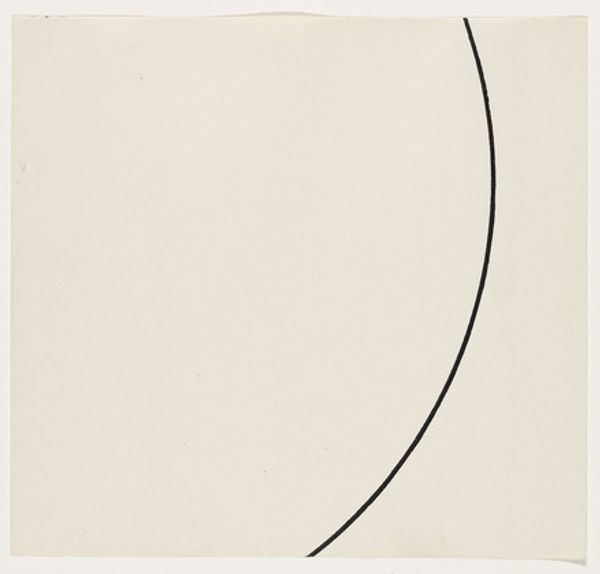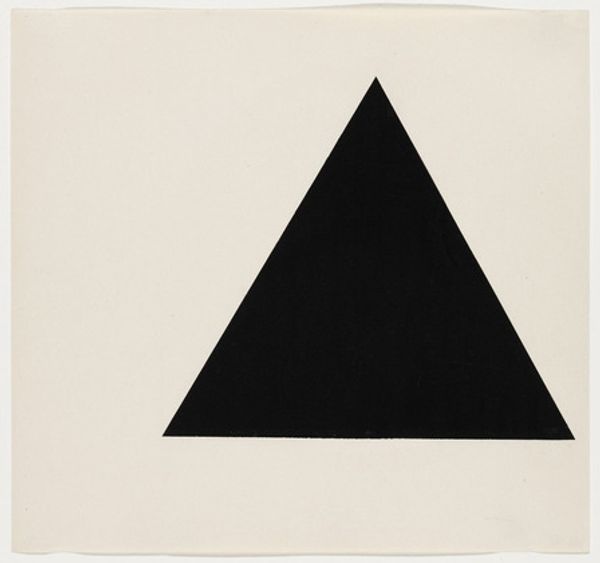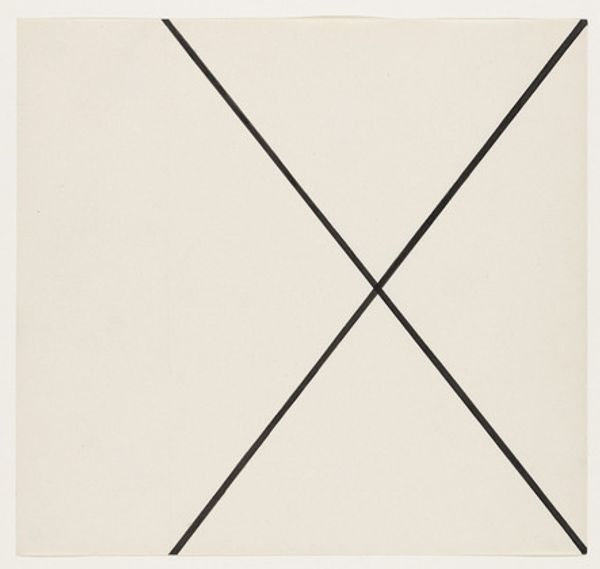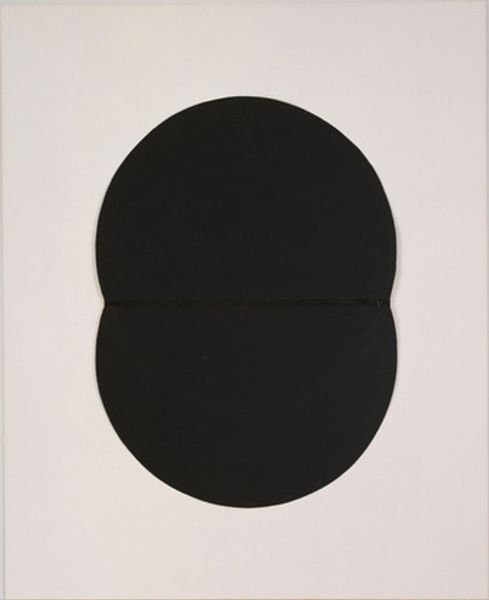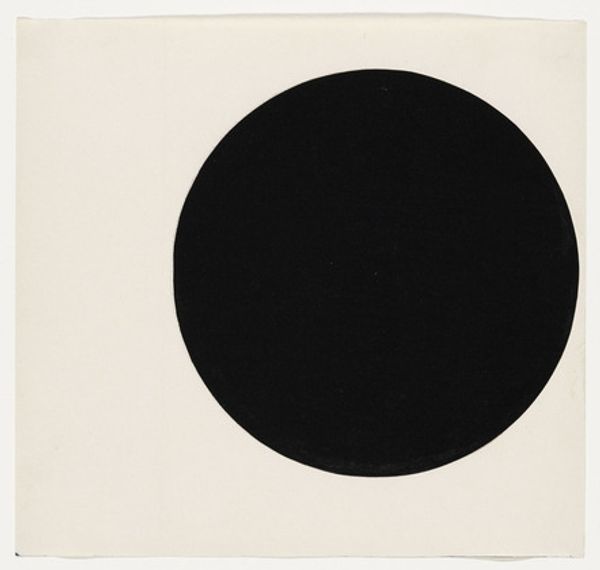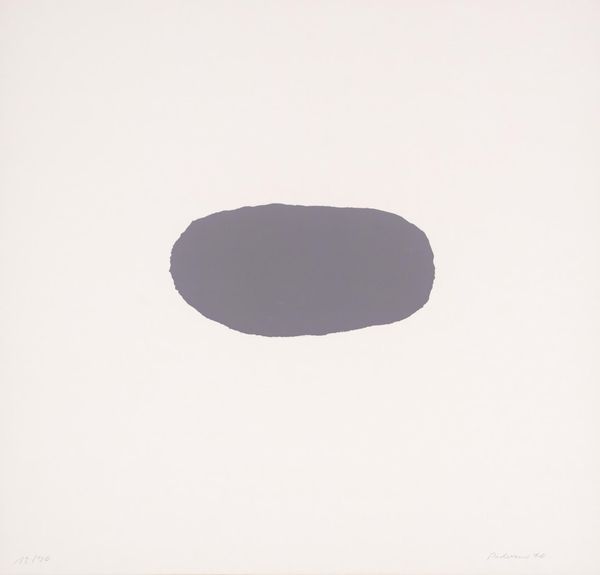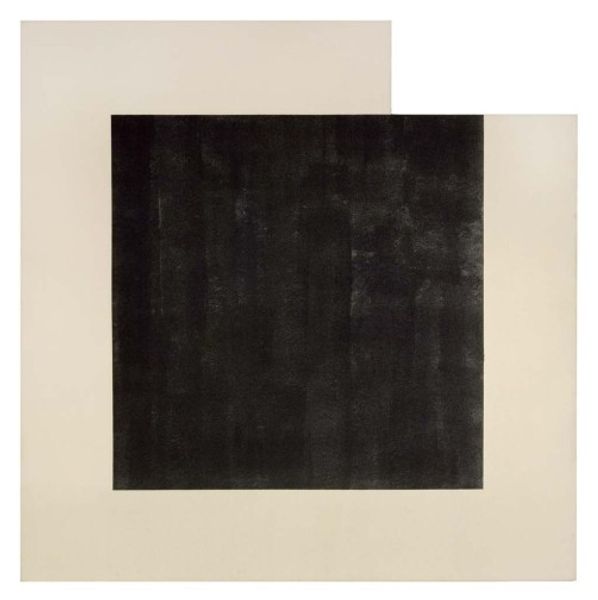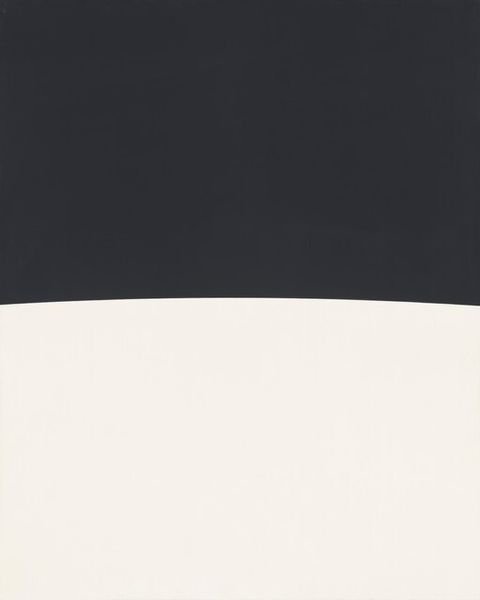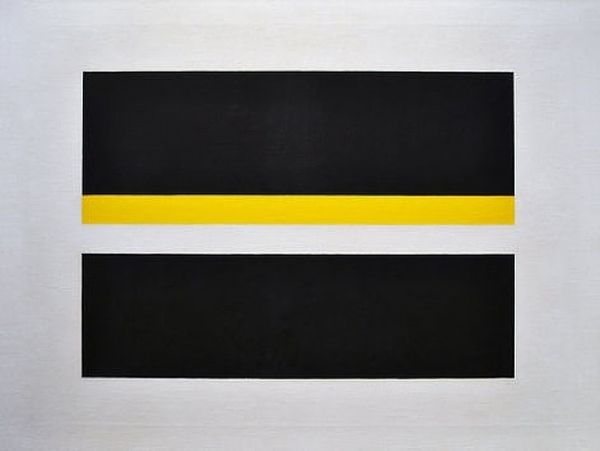
#
minimalism
#
repetition of white
#
geometric
#
abstraction
#
line
#
modernism
#
hard-edge-painting
#
monochrome
Copyright: (c) Ellsworth Kelly, all rights reserved
Editor: Ellsworth Kelly's "Mandorla Form," created in 1951, presents such a stark contrast. It’s essentially a white canvas bisected by a sleek, black form. It feels both simple and monumental. What ideas was Kelly exploring at this time, and how does this relate to its reception? Curator: In 1951, Kelly was deeply immersed in the Parisian art scene, grappling with abstraction’s evolving role in post-war society. It’s tempting to view this stark piece through the lens of institutional critique that came later in the 20th century. How did institutions define artistic value after the war? What narratives were galleries and museums curating about the role of the artist, especially the American artist? Editor: So, the simplicity could be a commentary on… what, exactly? A rejection of traditional artistic narratives perhaps? Curator: Precisely! It can be seen as pushing back against the dominance of established art historical narratives. Kelly gives us an artwork that asks, “What constitutes a worthy subject for art, and who gets to decide?” Is this purely aesthetic, or could the very simplicity hold a socio-political charge? Editor: That's fascinating! I never considered how its minimalism could be such a potent statement about the art world itself. Curator: And think about how its scale impacts our experience within the museum space. Does its large format empower the viewer or does it confront us with the limitations and frameworks of art consumption? The politics of imagery, always at play. Editor: I see now that “Mandorla Form” is far more complex than I initially thought, and its very existence challenges us to question power structures. Curator: Indeed, Ellsworth Kelly created something seemingly simple that engages with complex cultural narratives, challenging institutions and ultimately prompting essential conversations about how we assign meaning and value to art.
Comments
No comments
Be the first to comment and join the conversation on the ultimate creative platform.
